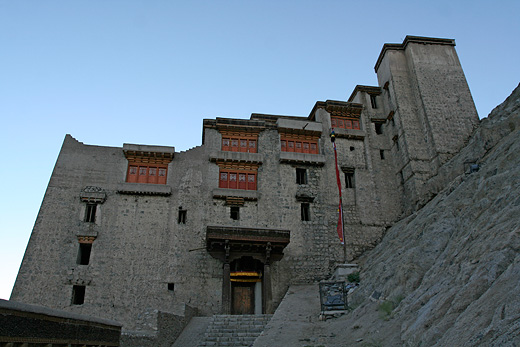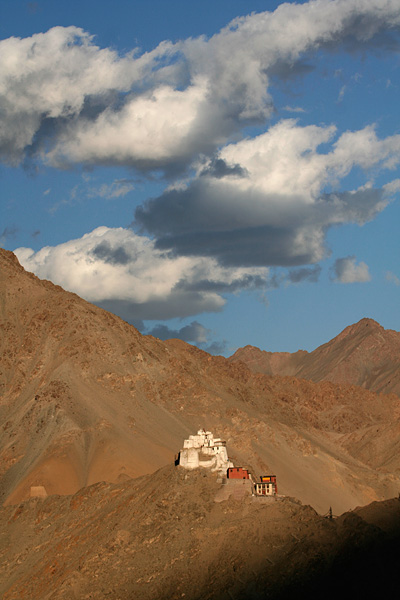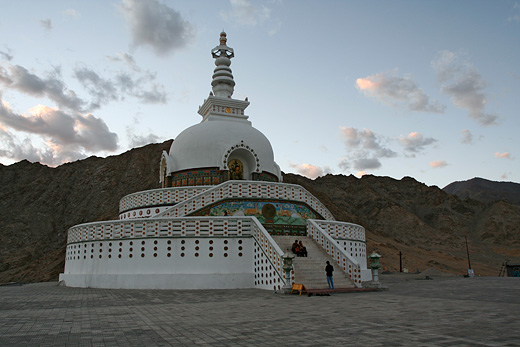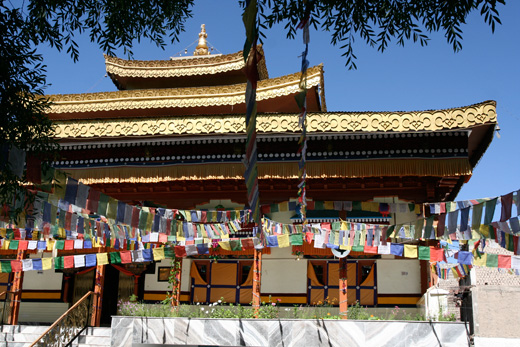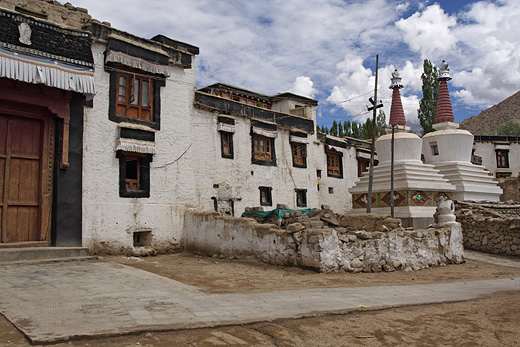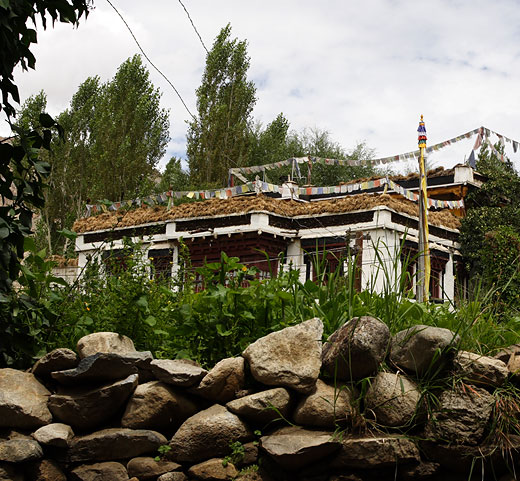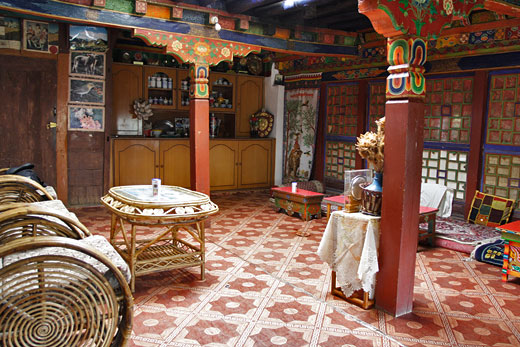Ladakh by Bus ( and other forms of public transport )
One of the things that worried me most about travelling in Ladakh was about finding transport. The area being remote and population sparse, I had impressed upon myself that there would no public transport available. Hiring a cab to take me all over the region for two months was unthinkable – the cost would be so disproportionate that I could buy a new car in the money that would get spent. Biking was an option I considered. It was economically viable and free me from being bound to the schedules of a shared transport. But I am not so much of a bike person and look at it as more a utility than pleasure, and sometimes even a burden. A larger specimen like a Bullet , which has somehow evolved as an obvious choice for these tough mountain terrains is something that I am even less fond of. I live in a constant fear of being crushed under its gigantic body that weighs four times me, and have never felt the supposed ‘coolness’ or macho experience associated with these beasts. Nor do I think it would be the most comfortable thing to ride hours together in the semi-metallic roads that are sometime full of crests and troughs not very different from the mountain terrains where the road is laid. What ensued hence was some research on availability of public transport in Ladakh, though my hopes weren’t high.
The ever faithfull internet is unusually silent on availability of buses and shared transport anywhere in Ladakh. It is probably because every traveller who has has the slightest online presence and made it to Ladakh has done his or her trip in personal or hired vehicle, and has treated public transport in league with untouchables. I would not blame them though. It is not often that one gets to visit a region as remote and exotic as Ladakh, and if you have no more than a week or two to traverse the entire mountain landscape and have little time to blink or pause, you might as well spend that time constantly on the wheels than letting your backpack rest besides you, while you sit on a rock and await the next bus. And for some of these places hidden far from the highways and from the main transport hubs, the next bus arrives only after a week or ten days! By then it would be time to pack that backpack and make the homeward journey.
I must thank my stars for foiling all the earlier attempts to visit Ladakh, I had with me a wide window to spend here when I eventually made it. Several attempts in the past to make a quick dash did not materialize either because I was busy with other things that had to be prioritized or because I was compelled by knowledgeable advisers not rush through this land of extraordinary landscapes and culture. I had two months to spare, which means I could afford the patience to wait for that next bus to arrive. Though the world wide web did not favour my research, friends and fellow bloggers spilled a few beans, which, compiled together, formed substantial information and presented a possibility of traversing Ladakh by bus (Thanks to Yogesh for the first lead here). And finally on arriving at Leh, JK Tourism Office filled us with in all the information needed, which was like music to the ears. We could get to nearly every place by bus had we had enough patience. Bus schedules to some far off locations could have indeed tested our patience and rendered two months too short, but such places weren’t many.
I finally did manage to cover most locations in Ladakh using shared transport, though there were exceptions. And these exceptions added some fun to the whole journey as we tried to cross a rather unruly stream in an unreliable Bullet Thunderbird or when we got into an unpleasant situation another time owing to a flat tyre in a smaller bike. A car that left our pockets slimmer helped us arrive on time for a festival in one of the remote locations. But everywhere else we hopped into buses, where in, not surprisingly, we saw very few or no tourists in our company.
More often than not it is lack of time that forces visitors to hire transport to suit their pace of journey, but there probably exist occasions when unavailability of information makes them approach a cabbie. Here is a rough idea of availability of transport from Leh to other parts of Ladakh. These are recollections from my memory. The helpful people at JK Tourism office (Phone number – 01982252094) in Leh would be able to provide more precise timings.
Let to Padum and rest of Zanskar. Buses are usually available once in three days. The frequency is erratic – sometimes you may have buses on alternate days too, and you may not find buses on some other days. The tough part is, there are no agents who can book your tickets in bus stand or elsewhere. When the bus arrives from Zanskar, they park it in a corner of Leh Bus Stand and the conductor issues the tickets. Normally, a bus that has arrived today evening departs to Zanskar only on day after tomorrow morning. That gives you a two-day window to book your tickets. The last seats are not exactly anyone’s favourite, save yourself the trouble and be one of the first to book.
If you don’t find a bus on the day you are searching, ask around a bit. If you are lucky, you may stumble upon a jeep driver who is on his way to Padum and willing to take passengers.
It would be a similar exercise to return from Padum. Alternately, if you are lucky to get some transport (trucks or shared taxis) from Padum to Kargil, you can take the next-day bus from kargil to Leh.
Leh to Lamayuru. Daily morning buses leaving for Kargil stop at Lamayuru. They depart from Kargil bus stand next to Polo Grounds, usually between 4am and 6am. Book your tickets a day earlier.
To return from Lamayuru to Leh, you have to flag a bus coming from Kargil. Alternately, if you can find a shared jeep (or hire one yourself) that can take you till Khalsi (about an hour from Lamayuru), you can take a local bus further to Leh.
Taking public transport to Lamayuru is not advisable if you intend to return on the same day.
Leh to Pangong Tso. Once a week JKSRTC bus connects Leh with Pangong and returns on the next day. Inquire at the tourist office for day of the week.
Leh to Tso Moriri. There is a bus connecting Leh with Tso Moriri once in every ten days. It returns to Leh next morning.
Leh to Nubra Valley. JKSRTC buses connect Leh with Nubra Valley thrice a week. Returns next morning. Note that some of these buses go to Panamik and some go to Hunder.
Hemis, Thiksey, Spithuk, Likir, Alchi. Minibuses leaving several times a day connect Leh with these places. When you arrive at your destination, remember to ask for the last bus back to Leh if you are planning to stay there till evening.
